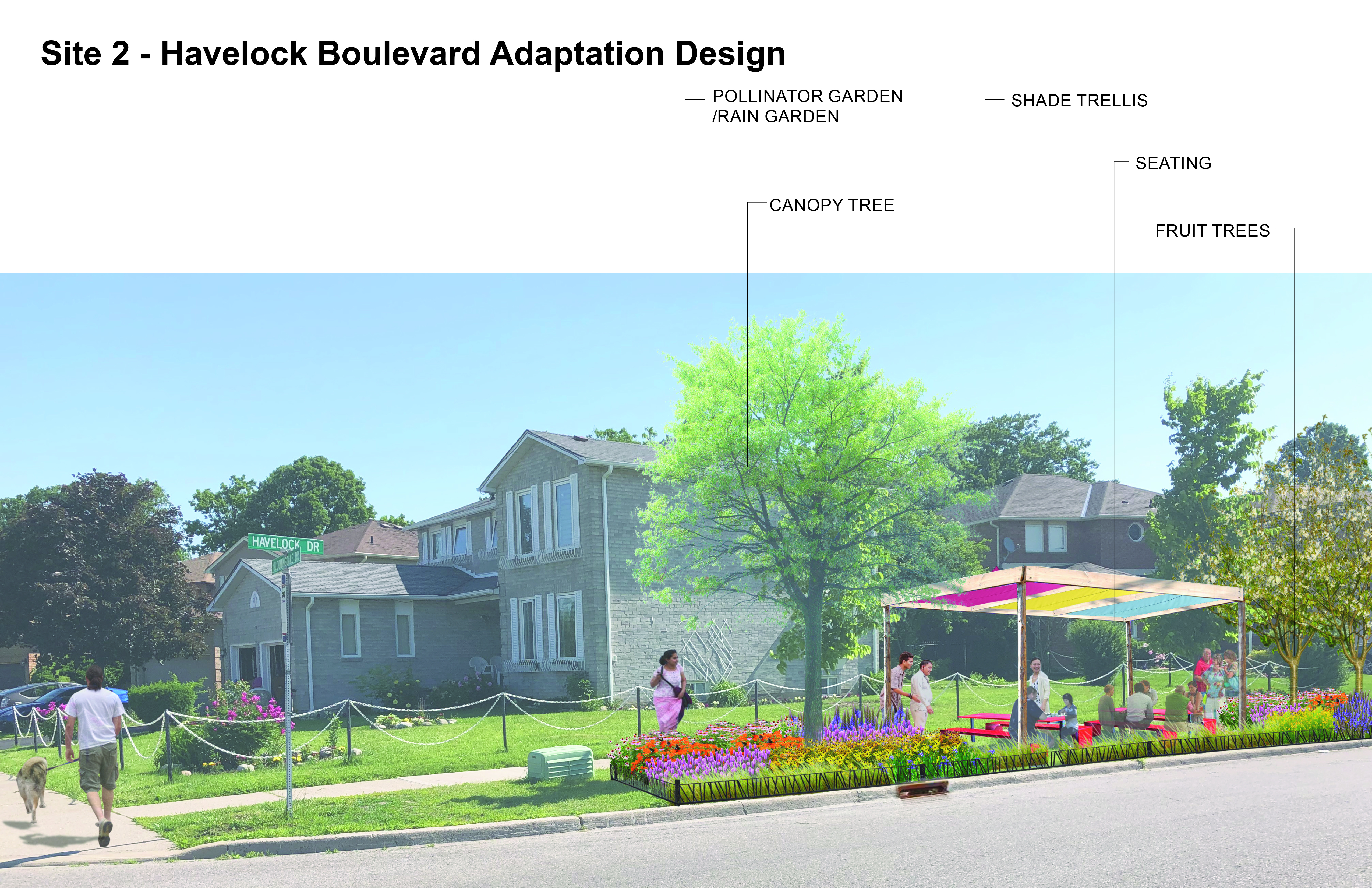Understanding and Assessing Impacts
Climate Ready County Court is one of the first vulnerability assessment and adaptation plans to be done at the neighbourhood scale in Canada. The project is a collaboration between TRCA, City of Brampton, Region of Peel, County Court Neighbourhood Association and Infrastructure Ontario. It seeks to combine local knowledge with broader local and regional vulnerability assessments and sector-based studies. Climate Ready County Court seeks to create understanding of local climate-related risks and vulnerabilities, and to identify adaptation strategies to avoid or mitigate potential impacts. The analysis of climatic impacts and risk and vulnerability characterization was part of Phase 2 of the project, which included a technical review of climatic data as well as mapping exercises. The assessment methodology was based on the Urban Community Resilience Assessment Framework, which was developed to help practitioners take an integrated approach to assessing vulnerability within a specific region, allowing the ability to link city-level resilience planning with the priorities of local residents. In this case, the process also builds on the local County Court Sustainable Neighbourhood Action Plan (SNAP) that is currently underway.
Community engagement and resident capacity building were critical to the development of the Vulnerability Assessment and Adaptation Plan. Activities built on the community connections developed through the broader County Court SNAP initiative, and key stakeholders and active residents were closely involved in all stages. During Phase one, a review of best practices in climate community engagement was undertaken to help design an innovative and meaningful engagement approach. Identified local risks and vulnerabilities for County Court include increasing heat stress; low tree canopy coverage; extreme wind and weather events causing higher risk to homes; lack of awareness regarding climate impacts and emergency preparedness activities; communication barriers due to a significant portion of non-English-speaking residents; increasing isolation; and limited mobility from a lack of trails and pathways around the eastern portion of the neighbourhood. This project also aims to create a personal connection to local climate futures and create a shared plan using creative, inspiring, and future oriented activities.


